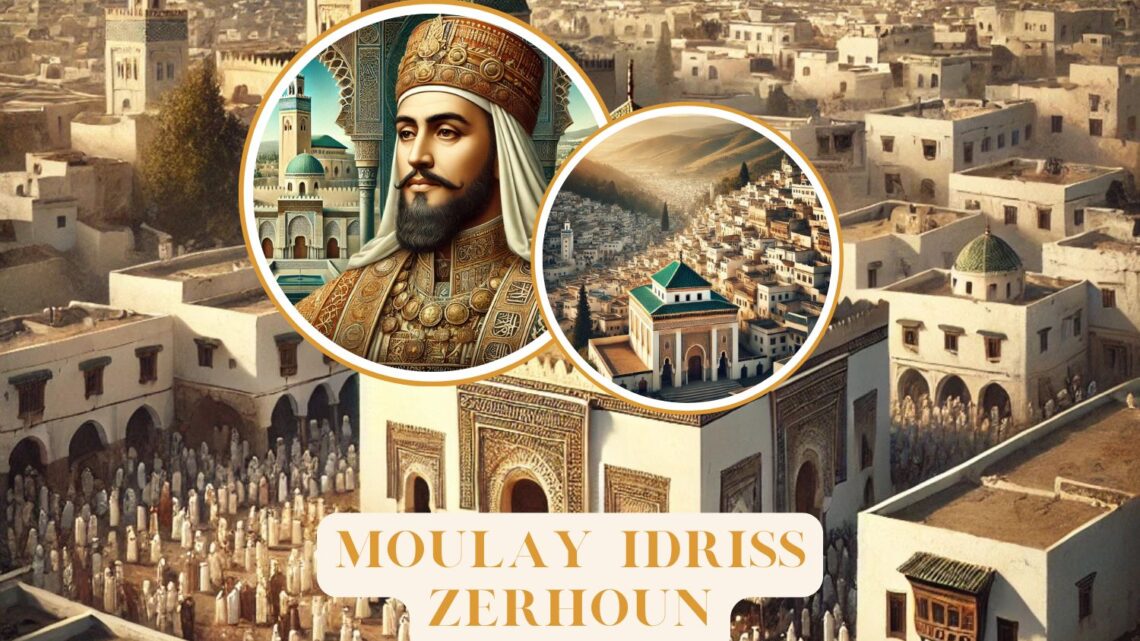
Moulay Idriss Zerhoun, often referred to simply as Moulay Idriss, is a small town nestled in the Zerhoun Mountains near the ancient city of Volubilis in northern Morocco. Despite its modest size, this town holds immense historical and spiritual significance in Morocco. It is named after Moulay Idriss I, a key figure in Moroccan history who is revered as the founder of the Idrisid dynasty and the first Islamic ruler of Morocco. Today, the town is an important pilgrimage site, attracting both devout Muslims and visitors interested in its rich historical and religious legacy.
This article will delve into the history of Moulay Idriss Zerhoun, its religious importance, the town’s key landmarks, and its continued significance in contemporary Morocco.
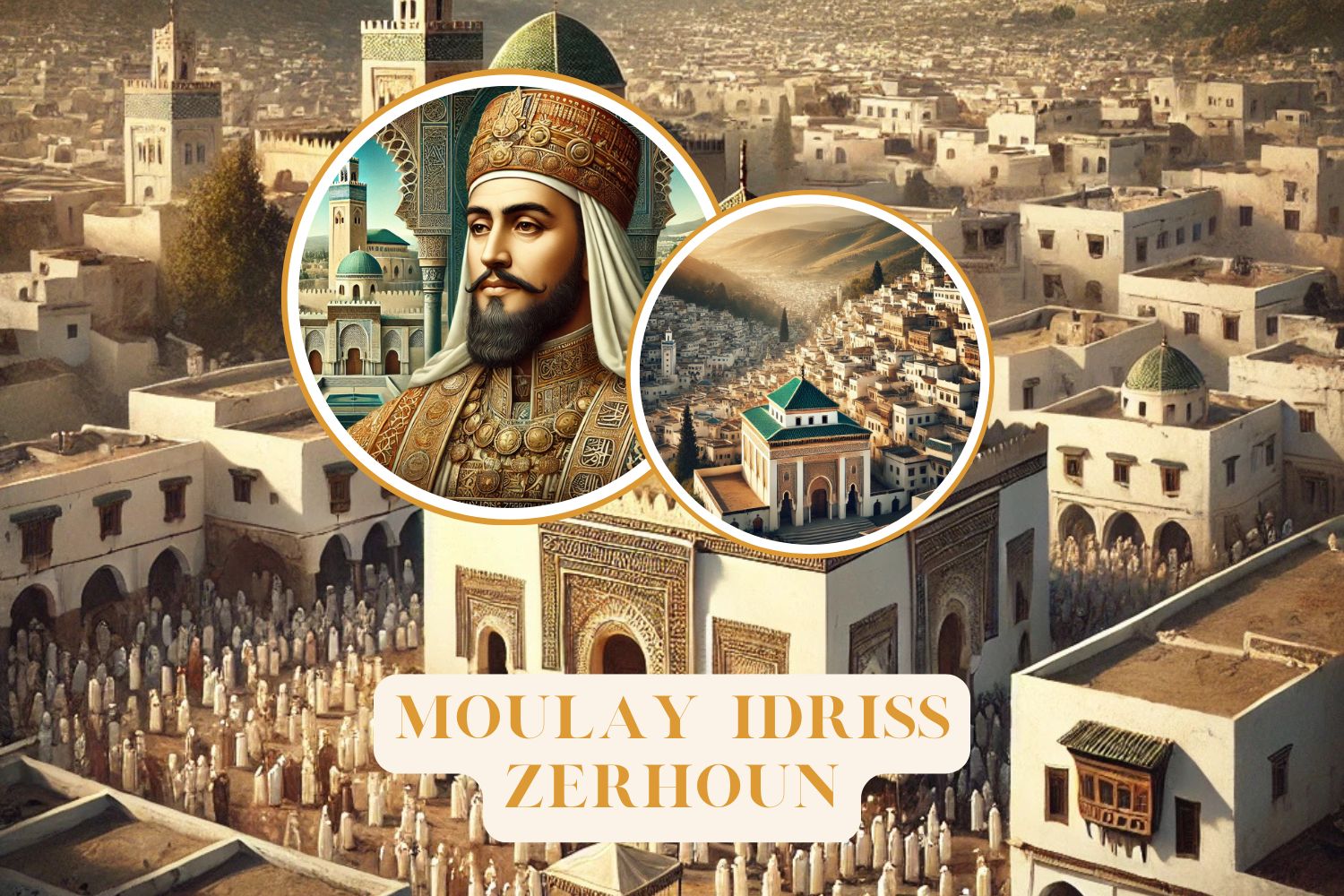
The Life and Legacy of Moulay Idriss I
Moulay Idriss I was a descendant of the Prophet Muhammad and fled to Morocco after the fall of the Abbasid dynasty in the east. Arriving in Morocco in the late 8th century, Moulay Idriss was welcomed by local Berber tribes who accepted him as their leader due to his religious lineage. He established the Idrisid dynasty in 789 AD, which is considered the first independent Muslim state in Morocco.
Moulay Idriss I’s reign was short-lived, as he was assassinated in 791 AD, likely due to political intrigue orchestrated by the Abbasids who saw his rise as a threat to their power. Despite his brief rule, Moulay Idriss I left a lasting legacy. His son, Moulay Idriss II, continued his work and founded the city of Fez, which would become a significant center for Islamic learning and culture in North Africa.
The town of Moulay Idriss Zerhoun became his resting place and a focal point of pilgrimage due to his esteemed position as a religious figure and his role in the establishment of Morocco’s first Islamic dynasty.
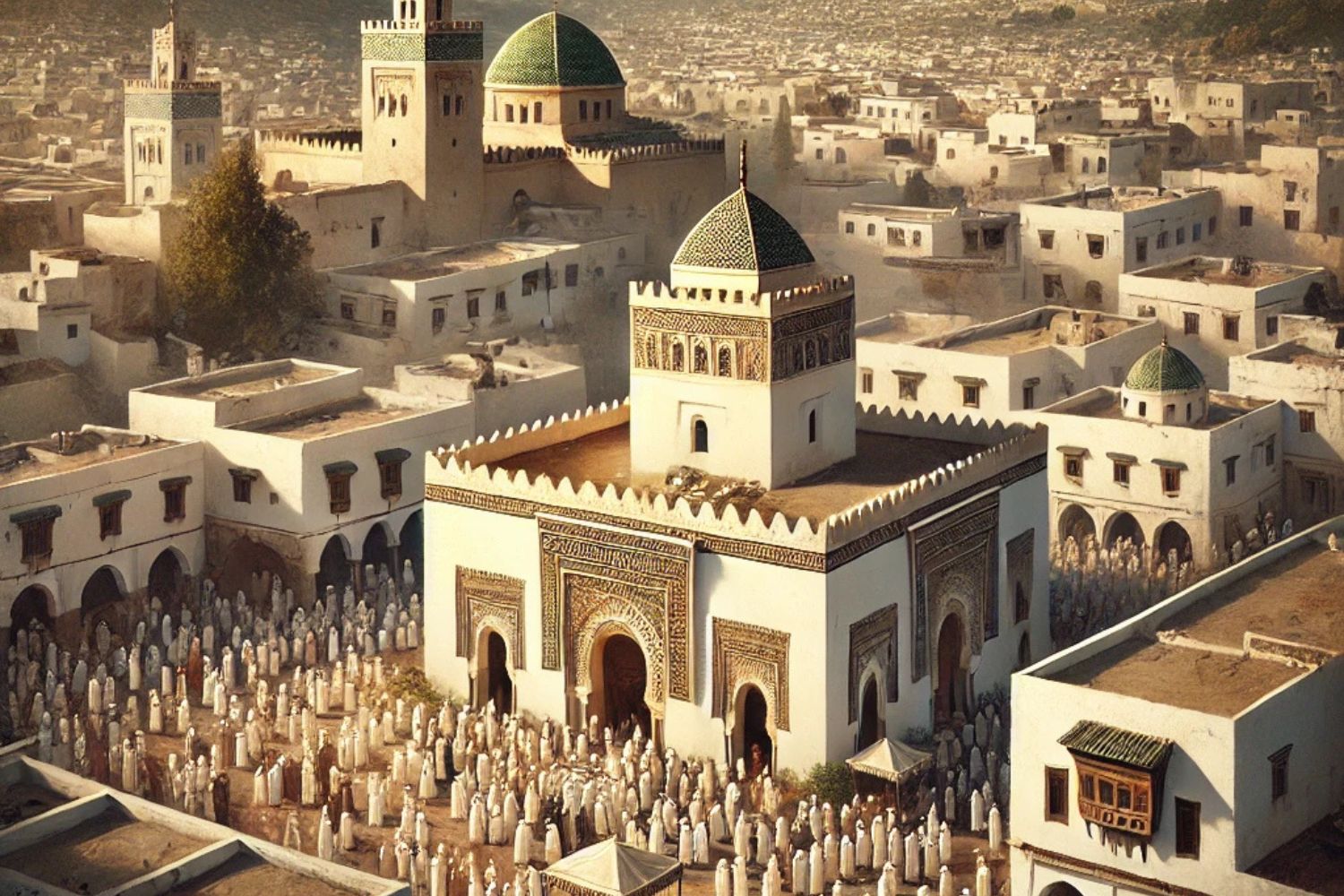
Religious Significance of Moulay Idriss Zerhoun
Moulay Idriss Zerhoun is considered one of the most important pilgrimage sites in Morocco. It is home to the Mausoleum of Moulay Idriss I, where the revered ruler is believed to be buried. For many Moroccan Muslims, visiting the tomb of Moulay Idriss is a way to honor his contributions to the spread of Islam in Morocco.
The town holds special significance during the annual Moussem of Moulay Idriss, a pilgrimage and religious festival that draws thousands of pilgrims from across Morocco. The moussem takes place every year in August, and for many Moroccans, particularly those unable to undertake the pilgrimage to Mecca, a visit to Moulay Idriss Zerhoun holds great spiritual value. Historically, it was said that five pilgrimages to Moulay Idriss Zerhoun were equivalent to one Hajj to Mecca, although this belief is less emphasized today.
The spiritual atmosphere of the town, combined with the beauty of the surrounding Zerhoun mountains, makes it an attractive destination for pilgrims and tourists alike.
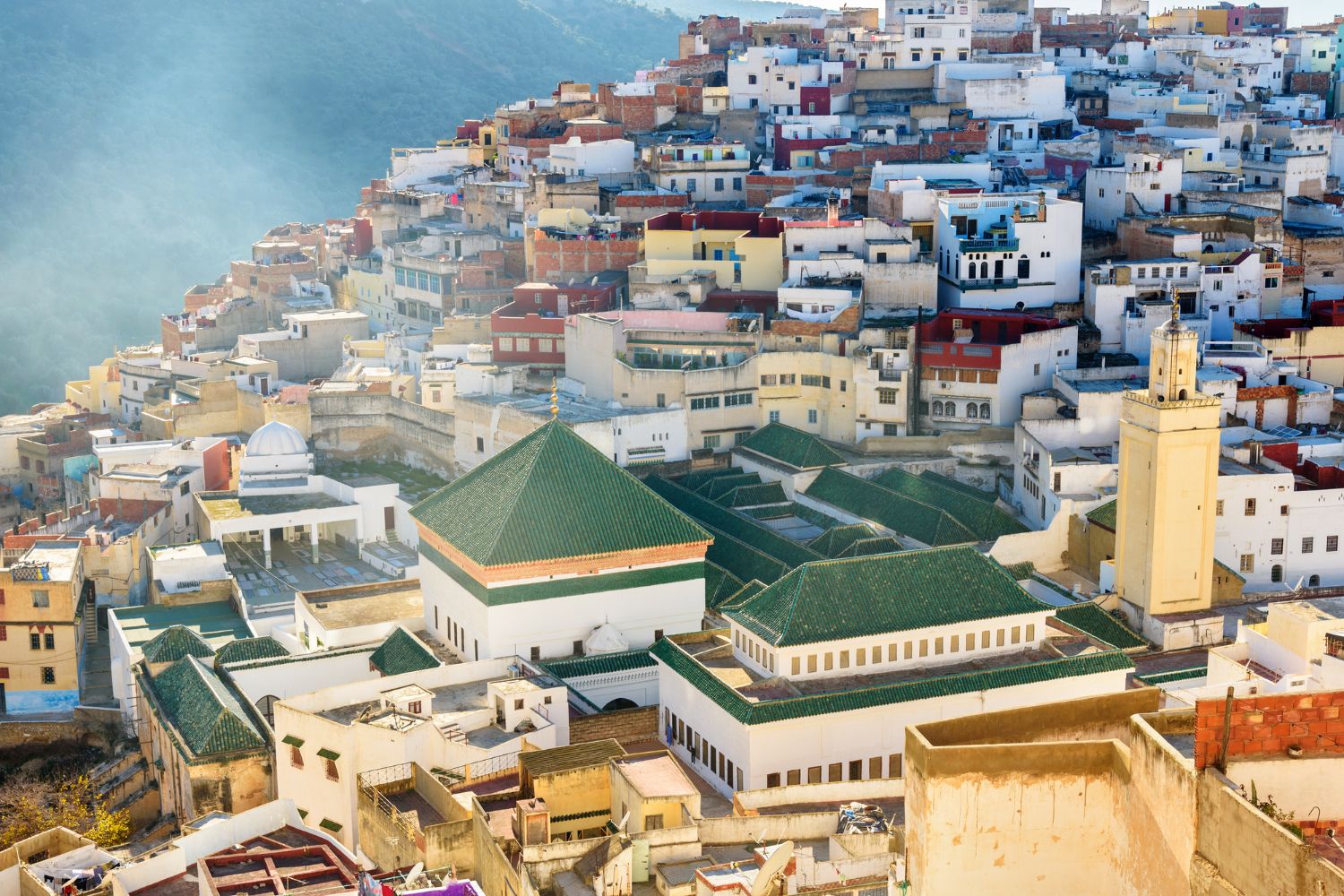
Key Landmarks in Moulay Idriss Zerhoun
Moulay Idriss Zerhoun is a small but picturesque town, with narrow winding streets, white-washed buildings, and stunning views of the surrounding valleys and hills. Some of the most significant landmarks include:
Mausoleum of Moulay Idriss I
The Mausoleum of Moulay Idriss I is the centerpiece of the town and the main reason pilgrims visit. However, it is important to note that non-Muslims are not allowed to enter the mausoleum itself, but they can admire its architecture from outside. The building is adorned with beautiful zellij tiles, traditional Moroccan stucco work, and ornate wooden doors. The mausoleum is regarded as a sacred space, and many pilgrims come to seek blessings, give thanks, or pray for personal reasons.
The Round Minaret
The Round Minaret of Moulay Idriss Zerhoun is unique because it is the only round minaret in Morocco. Most minarets in Morocco, and the wider Islamic world, are square or rectangular in shape. The round minaret is part of a small mosque located near the mausoleum and is decorated with green tiles, symbolic of Islam.
Volubilis
Just a few kilometers from Moulay Idriss Zerhoun are the ancient Roman ruins of Volubilis, one of the best-preserved Roman sites in North Africa. Volubilis was a key city during the Roman Empire, and its proximity to Moulay Idriss Zerhoun adds another layer of historical richness to the area. Many visitors combine a trip to Moulay Idriss with a visit to the archaeological site of Volubilis, which features impressive remains of temples, basilicas, mosaics, and arches.

The Town Today
In modern times, Moulay Idriss Zerhoun remains a small, serene town, but its historical and religious significance continues to attract visitors. For centuries, the town was closed to non-Muslims, but this restriction was lifted in the mid-20th century, although access to certain religious sites like the mausoleum remains restricted for non-Muslim visitors.
The town is also known for its olive cultivation, and the surrounding hills are dotted with olive groves. Visitors to Moulay Idriss Zerhoun can enjoy local olive products, as well as traditional Moroccan dishes such as tagines and couscous, which are served in local eateries.
For those interested in a quieter and more authentic Moroccan experience, away from the bustling medinas of Fez or Marrakech, Moulay Idriss Zerhoun offers a peaceful retreat. Its strategic location near Volubilis also makes it a convenient stop for history buffs exploring northern Morocco.
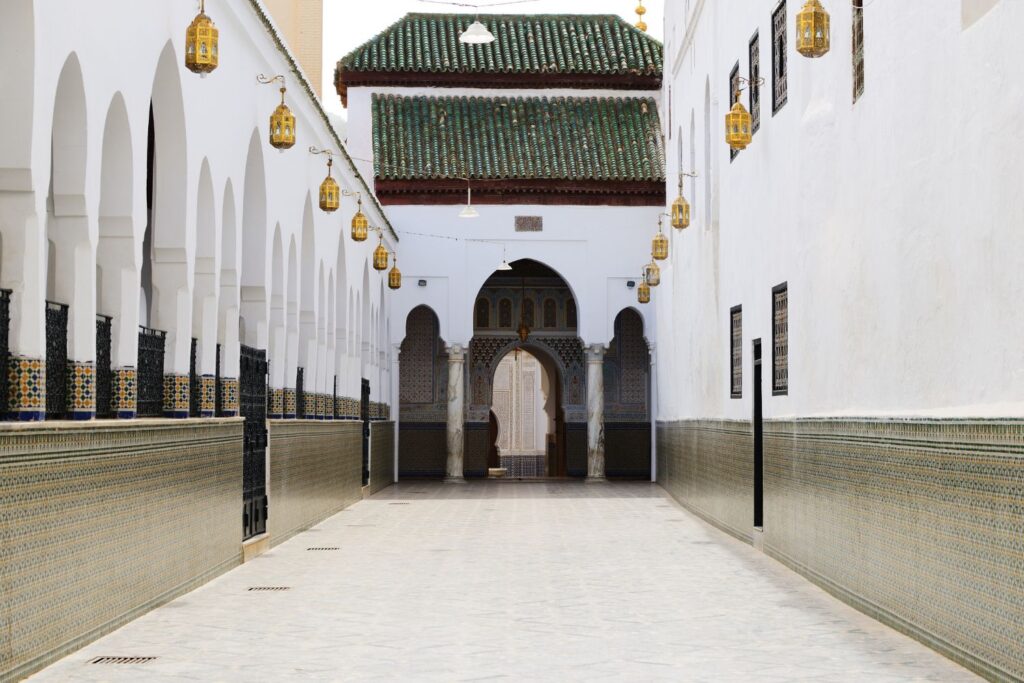
Preservation and Tourism
In recent years, there have been efforts to preserve the historical and cultural heritage of Moulay Idriss Zerhoun. The town has been carefully protected from overdevelopment, maintaining its traditional charm. However, increased tourism has brought both opportunities and challenges. On one hand, tourism helps support the local economy and brings attention to the town’s historical importance. On the other hand, there are concerns about the preservation of its cultural identity and the need to balance tourism with the town’s religious and spiritual significance.
The Moroccan government, alongside local and international organizations, has been working to ensure that Moulay Idriss Zerhoun remains a key site of cultural and religious heritage, while also promoting sustainable tourism that respects the town’s traditions.
Conclusion
Moulay Idriss Zerhoun is much more than a small town in the mountains of Morocco; it is a symbol of the country’s religious and historical foundations. As the resting place of Moulay Idriss I, the town serves as a reminder of Morocco’s early Islamic heritage and the birth of the nation as an independent Muslim state. For centuries, pilgrims have come to this sacred site seeking spiritual fulfillment, and today, it continues to be a place of reflection, history, and devotion.
Whether for religious reasons or historical curiosity, a visit to Moulay Idriss Zerhoun offers a unique opportunity to explore Morocco’s rich past and connect with the spiritual traditions that have shaped the country.